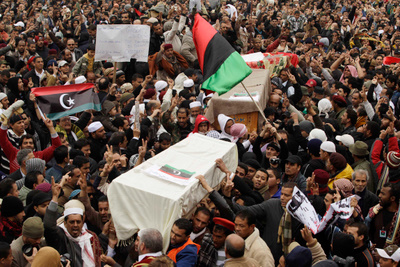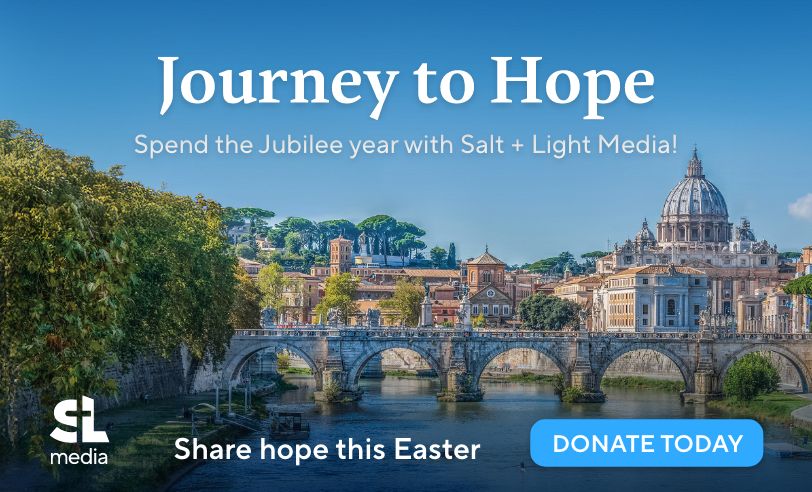

The Other Side of the Headlines
Alicia Ambrosio
Friday, February 25, 2011
 The unrest in the Middle East and Northern Africa has prompted stress in Europe. Malta, Italy and Spain have often been the first port of call for citizens fleeing North Africa. These mono-cultural countries have suffered extreme culture shock in the last 10 years as the once homogeneous cultural fabric in these nations was forced to expand to welcome people who not only look different, but speak a different language, and often practice a different religion. While some might arrive via traditional channels with legal papers, many do not.
In Malta illegal immigrants have been jailed, while in Italy they are placed in "welcome centres" until a course of action can be determined. In Spain recent legalization campaigns have proved controversial with opponents claiming it would encourage more illegal immigration. Amidst the fear and apprehension, however, are those who recognize that these immigrants are fleeing from tragic situations and need to be welcomed with care and concern.
In Lampedusa, Italy at least one parish priest takes the path described in the Gospels by helping house, feed, clothe and safeguard those who arrive in the Italian port city in desperate conditions after an often harrowing passage by boat.
Fr. Stefano Natasi told La Bussola, an Italian Catholic newspaper:
The unrest in the Middle East and Northern Africa has prompted stress in Europe. Malta, Italy and Spain have often been the first port of call for citizens fleeing North Africa. These mono-cultural countries have suffered extreme culture shock in the last 10 years as the once homogeneous cultural fabric in these nations was forced to expand to welcome people who not only look different, but speak a different language, and often practice a different religion. While some might arrive via traditional channels with legal papers, many do not.
In Malta illegal immigrants have been jailed, while in Italy they are placed in "welcome centres" until a course of action can be determined. In Spain recent legalization campaigns have proved controversial with opponents claiming it would encourage more illegal immigration. Amidst the fear and apprehension, however, are those who recognize that these immigrants are fleeing from tragic situations and need to be welcomed with care and concern.
In Lampedusa, Italy at least one parish priest takes the path described in the Gospels by helping house, feed, clothe and safeguard those who arrive in the Italian port city in desperate conditions after an often harrowing passage by boat.
Fr. Stefano Natasi told La Bussola, an Italian Catholic newspaper:
... as recently as a few days ago up to 1000 people were arriving every night. On the island there are five thousand Tunisians, almost more than the number of parishioners who are six thousand. There was no time to waste, with the assistant pastor we opened rooms in the parish and housed them. We then asked the Ministry to re-open immediately the welcome centre and they also began sending people to other parts of Sicily and southern Italy with special flights. Then we were able to breathe a bit.He points out that the welcome centre at Lampedusa has been empty in recent years due to a "politic of rejection." In 2009 Italy made international headlines after returning 227 Libyans to Tripoli after they were picked up by Italian vessels just off the coast of that country. The 227 people were not given a chance to claim refugee status as they never actually arrived in Italy. Just this month the Tunisian government voiced it's dismay with Italy after the Italian government proposed to deploy police to that nation to help stop the flow of people leaving Tunisia by boat for Europe. Fr. Natasi explains that these immigrants arriving illegally by boat have nothing left. They come to Italy, Malta and Spain seeking a better life and freedom. He told La Bussola most of the refugees he met were young men in their 20s and 30s. With the unrest in their homeland they lost their jobs and were forced to flee for their lives. Yet the Italian media, said Fr. Natasi, often showed images of hundreds and hundreds of refugees arriving on Sicilian shores, causing great alarm among citizens who believe the new arrivals are criminals who will put locals at risk. However, little by little Fr. Natasi manages to change the way these refugees are perceived. He has managed to build up a group of collaborators, parishioners, who work together to welcome the refugees who land at Lampedusa. That direct contact has shown local residents that these “boat people” are really just young men with hopes and dreams, trying to change their lives in the only way open to them. - Mourners carry coffins containing the bodies of Libyans who were killed in the recent clashes in Benghazi (CNS photo/Suhaib Salem, Reuters)
Related Articles:
Category: General Posts
Tag: current events, Libya
Homily of Pope Leo XIV at the Mass for the Jubilee of Families, Children, Grandparents, and the Elderly
Sunday, June 1, 2025
 Pope Leo XIV
Pope Leo XIV
Pope Leo XIV celebrated Mass for the Jubilee of Families, Children, Grandparents, and the Elderly and referred to Pope Francis and mentioned spouses who have been beatified and canonized, like the parents of St. Therese of the Child Jesus.
Looking back on Rerum Novarum
Monday, May 26, 2025
 Matthew Neugebauer
Matthew Neugebauer
Pope Leo XIV chose his name primarily to highlight his most recent namesake Leo XIII, whose "historic encyclical Rerum Novarum addressed the social question" to the challenges of his time. What concerns does the encyclical address? How does it speak to its time? And what has been its legacy 134 years later?
Homily of Pope Leo XIV at the Mass and Installation on the Roman Cathedra
Sunday, May 25, 2025
 Pope Leo XIV
Pope Leo XIV
On May 25, 2025, Pope Leo XIV was formally installed on the cathedra of the Diocese of Rome at a Mass in St. John Lateran Basilica. In his homily, he said that "communion is built primarily 'on our knees,' through prayer and constant commitment to conversion."
St. John Lateran: The Pope’s Cathedral
Friday, May 23, 2025
 Matthew Neugebauer
Matthew Neugebauer
Did you know that the pope has his own cathedral? Pope Leo XIV is about to "take possession" of the Lateran Basilica, which you can read all about here.
Homily of Pope Leo XIV at the Inaugural Mass
Sunday, May 18, 2025
 Pope Leo XIV
Pope Leo XIV
On May 18, 2025, Pope Leo XIV inaugurated his pontificate with Holy Mass in St. Peter's Square. In his homily, he said, "I come to you as a brother, who desires to be the servant of your faith and your joy, walking with you on the path of God’s love, for he wants us all to be united in one family."
SUPPORT LABEL
$50
$100
$150
$250
OTHER AMOUNT
DONATE










